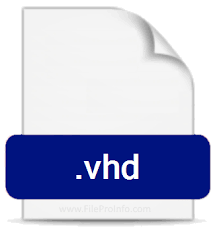A virtual hard disc (VHD) is a file format that stores the whole contents of a computer’s hard drive as a disc image. A disc image, often known as a Virtual Machine (VM), is a copy of a hard drive that includes all data and structural features. It can be saved in any physical host-accessible area and is also transportable, meaning it can be stored and transported using a USB flash memory device. VHD file can be used to run outdated applications, test software programs, or install several operating systems on a single computer.

What is VHD File?
A virtual hard disc image is contained in a VHD file, which is used by Microsoft Windows Virtual PC, a Windows virtualization software. It holds the contents of a virtual machine’s (VM) hard disc, including as disc partitions, a file system, files, and directories.
Since June 2005, the VHD Image Format Specification has been released as a royalty-free license. As an expansion of the VHD format, the VHDX format was introduced in 2012. .VHDX files are used to store virtual hard discs in the VHDX format.
What is VHD File typically used for?
VHD files are mostly associated with Microsoft’s Windows operating system. A VHD file is a VHISIC Hardware Description Language script (VHDL). It provides text-encoded models and commands that are used to automate design and simulation activities while constructing VHSICs and logic gates. VHD scripts can be created, edited, and run in hardware design environments like Quartus, ModelSim, and DirectVHDL.
A virtual hard disc created by virtualization tools such as Hyper-V, VirtualBox, VMware Workstation, and QEMU is another sort of VHD file. A readable/writable file system is used to save such a file as a disc image.
The VHD files are treated as hard discs in a virtual machine. These are included in newer Windows editions. This virtual hard disc allows many operating systems to coexist on the same host machine. It gives developers an excellent opportunity to test their program on a variety of operating systems without having to install a new hard disc. There are numerous advantages to using VHD files because they offer numerous functions.
How to Open VHD File?
To mount the virtual drive included in a VHD file and utilize it to launch a virtual machine, you can use a variety of virtualization programs, such as Microsoft Windows Virtual PC (Windows), VMWare Workstation (Windows, Linux), VMWare Fusion (Mac), and QEMU (cross-platform). You can also view the contents of a VHD file without mounting it using 7-Zip (Windows).
To access a VHD file, you’ll need software like Windows. You’ll get a Windows message like “How do you wish to open this file?” or “Windows cannot open this file” or a similar Mac/iPhone/Android alert if you don’t have the right software. If you’re having trouble opening your VHD file, try right-clicking or long-pressing it.
Then select a program from the “Open with” drop-down menu. A VHD file can also be viewed straight in the browser. Simply drag and drop the file into this browser window.
The VHD files are stored on a host file system that is accessible. These have guard disc features such as a fixed image that allows the user to view a file that is given the size of a virtual disc. A virtual machine’s hard disc can be modified by the files.
These VHD files can easily be transferred from the virtual hard disc to the host’s file system. Backups and restores are also possible with this format, as well as antivirus protection. Fixed hard disc images, Differencing hard disc images, and Dynamic hard disc images are all supported by VHD files.
